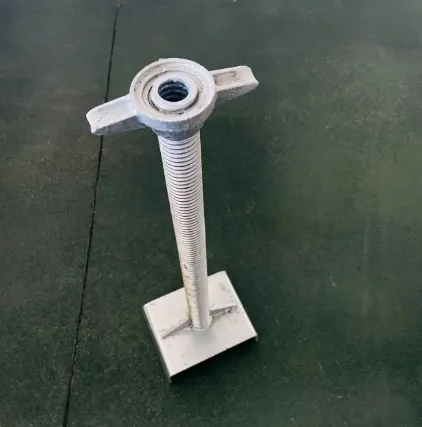
Enhancing Concrete Stability with Bar Tie Reinforcing
Structural value of bar tie reinforcing in modern frameworks
The construction industry continues to evolve with increasing demands for durability, safety, and cost-efficiency. Among the foundational components that ensure the stability of reinforced concrete structures is bar tie reinforcing. This critical accessory provides lateral stability between reinforcing bars (rebars), maintaining consistent spacing and alignment during the pouring and setting of concrete.

By preventing the displacement of steel reinforcement under pressure, bar tie reinforcing supports optimal load distribution throughout the structural framework. This leads to stronger foundations, reduced cracking, and longer structural lifespan. With various configurations available to suit different reinforcement layouts, bar tie systems are an essential investment for any high-quality construction project.
How concrete cover for rebar ensures long-term durability
The longevity of reinforced concrete structures depends heavily on how well the steel reinforcement is protected. That’s where concrete cover for rebar plays a vital role. This layer of concrete envelops the rebars, shielding them from environmental aggressors such as moisture, chemicals, and corrosion. When properly maintained, the cover prevents rust from spreading through the internal steel network, which would otherwise weaken the entire structure.
Designing the correct thickness and material consistency of the concrete cover for rebar is not only a matter of structural soundness but also compliance with international safety codes. Whether in columns, beams, slabs, or walls, this protective buffer ensures that the reinforcement remains functional for decades, even in extreme weather or marine environments.
The critical role of concrete reinforcement accessories in construction efficiency
High-rise buildings, infrastructure bridges, and complex civil projects rely on a range of concrete reinforcement accessories to meet demanding specifications. These include supports, spacers, fixing systems, and connection tools—all designed to maintain precise placement and orientation of rebars and mesh systems. Proper use of these accessories reduces installation errors and accelerates the overall pace of construction.
When integrated early in the planning process, concrete reinforcement accessories streamline labor workflows, reduce material waste, and increase the consistency of concrete pours. Their usage also allows for modularity and prefabrication, supporting off-site construction practices that are reshaping how modern structures are built. In essence, these small yet powerful tools help large-scale projects meet performance expectations with less rework and downtime.
Choosing the right cover reinforcement for extreme conditions
Certain environments place exceptional stress on reinforced concrete, such as coastal zones, chemical plants, and industrial facilities. In these contexts, choosing a robust cover reinforcement solution becomes indispensable. The reinforcement cover must not only shield the steel inside but also resist mechanical wear, thermal expansion, and corrosive agents.
Advanced cover reinforcement materials now include fiber-reinforced concrete and specially treated aggregates, offering enhanced crack resistance and minimal permeability. These covers work in tandem with the steel layout to maintain overall rigidity and performance, even under dynamic load cycles or long-term chemical exposure. Investing in high-quality cover systems ultimately translates to fewer repairs, extended lifecycle, and increased property value.
Optimizing load paths with joist reinforcement plate systems
In floor and ceiling construction, the integration of joist reinforcement plate systems is vital for transferring and distributing loads efficiently across the structure. These plates reinforce key junctions where joists intersect with beams or walls, mitigating stress concentration and improving resistance to deflection or collapse.
Modern joist reinforcement plate designs are typically prefabricated to ensure precision and consistency. They come in varied dimensions and finishes to suit different slab types and load requirements. Incorporating them into the rebar framework not only improves safety but also supports architectural flexibility—allowing for longer spans and open-plan layouts without compromising on strength or stability.
bar tie reinforcing FAQs
What is bar tie reinforcing and why is it essential in concrete construction?
Bar tie reinforcing refers to components used to secure intersecting rebars in position during concrete pouring. This reinforcement prevents bar movement, ensuring that the steel framework remains properly aligned and spaced. Without proper bar ties, concrete can develop weak zones, leading to reduced load capacity and higher risks of structural failure over time.
How does concrete cover for rebar protect against corrosion?
Concrete cover for rebar acts as a physical barrier that isolates steel reinforcement from moisture and environmental contaminants. A properly applied cover maintains the pH level needed to keep steel in a passive, non-corrosive state. If the cover is too thin or poorly compacted, water and chemicals can penetrate, leading to rust and structural degradation.
What types of concrete reinforcement accessories are most commonly used?
Common concrete reinforcement accessories include bar supports, chair spacers, plastic cones, steel ties, and rebar caps. Each serves a specific purpose—from maintaining bar spacing to protecting ends during handling. These accessories ensure that reinforcement systems are installed accurately, improving overall build quality and safety compliance.
When is it necessary to use enhanced cover reinforcement materials?
Enhanced cover reinforcement is necessary when building in aggressive environments like coastal regions, industrial zones, or places with freeze-thaw cycles. These materials offer superior resistance to cracking and permeability, helping maintain the integrity of the concrete cover over extended periods. Using such materials is often recommended by engineers to reduce future repair costs.
What role does a joist reinforcement plate play in floor construction?
A joist reinforcement plate is used to strengthen the connection between joists and other structural elements like beams or walls. These plates help evenly distribute load and prevent local bending or failure under stress. They are especially useful in reinforced concrete flooring systems where load-bearing consistency is crucial for safety and design flexibility.
-
The Importance of Reinforcement Bar in ConstructionNewsJul.11,2025
-
The Durability of Timber Steel FurnitureNewsJul.11,2025
-
How to Assemble Fixed Clamp Scaffolding SafelyNewsJul.11,2025
-
Essential Column Rebar Specifications for High-Rise BuildingsNewsJul.11,2025
-
Common Applications of Steel Keels in ConstructionNewsJul.11,2025
-
Benefits of Using Aluminum Scaffolding Ladders Over SteelNewsJul.11,2025
-
Stainless Steel Keel: Analysis of the Triple Advantages of Rigidity, Stability, and LightweightNewsJun.19,2025










